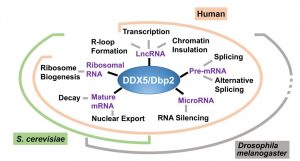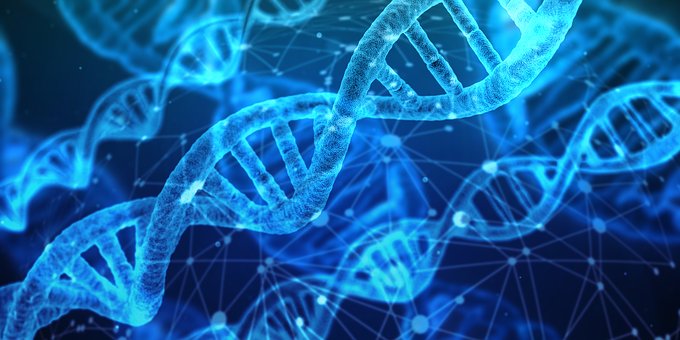DEAD-box proteins are the largest class of RNA helicases in all forms of life. Human DDX5, budding yeast Dbp2, and fruit fly Rm62 define a subfamily of DEAD-box proteins by their sequence conservation. Members from this subfamily function in multiple steps of RNA metabolism, including mRNA processing, microRNA processing, ribosome biogenesis, RNA decay, and regulation of transcription.

The DDX5/Dbp2 subfamily of RNA helicases act on multiple RNA substrates in a variety of cellular contexts. Some of these functions are characterized only in select organisms, while others are shared across budding yeast, flies, and humans.
It is thought that the DDX5/Dbp2 subfamily may function in diverse cellular roles by acting as a general RNP (RNA-protein complex) chaperone, as discussed by Xing and colleagues in WIREs RNA. These DDX5/Dbp2-dependent RNPs can be formed by long non-coding RNAs and chromatin modifiers to affect gene transcription, by mRNA and nonsense-mediated decay factors, to control mRNA degradation, and/or by ribosomal RNAs and ribosomal proteins in the ribosome biogenesis pathway. These diverse biological functions are dictated by the wide range of RNA targets acted on by DDX5/Dbp2, as opposed to being due to different biochemical mechanisms.
Given that DDX5 is a well-known oncogene in multiple cancer types, this suggests that aberrant RNP formation may underlie human cellular transformation events.
Kindly contributed by the Authors.

















